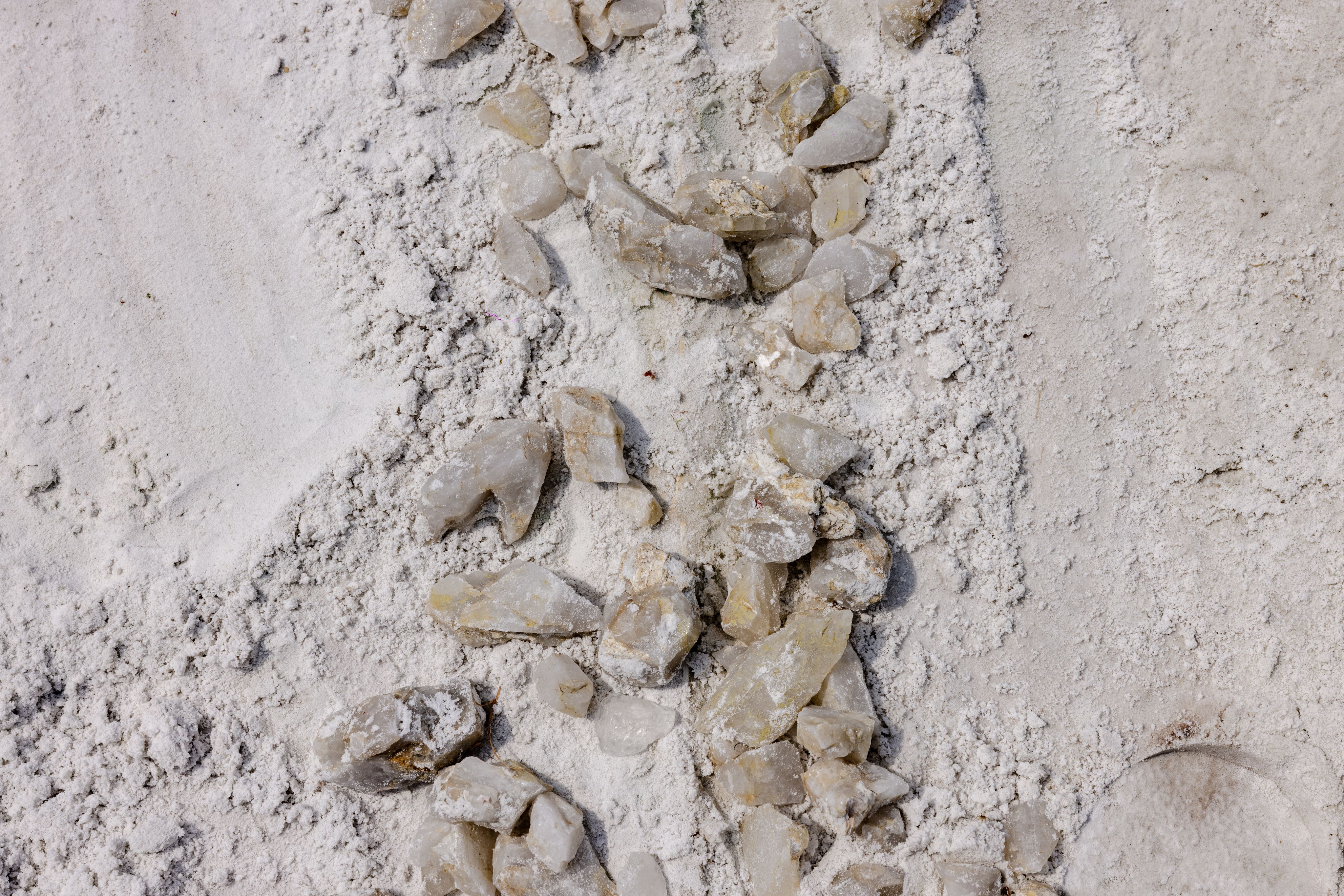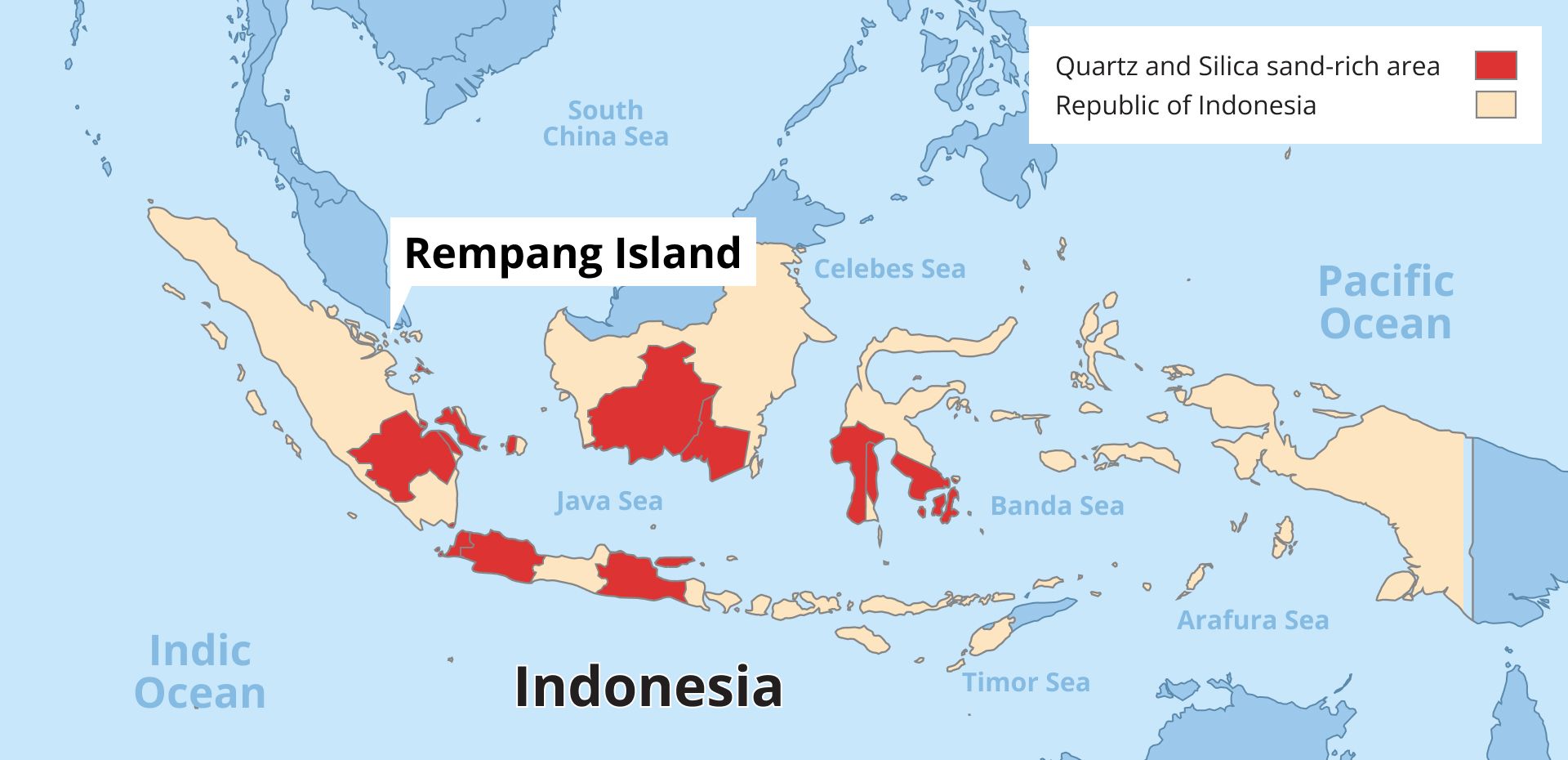Next On China’s Critical Minerals Hunt List:
Indonesian Quartz Sand
After nickel, China has its eyes on Indonesia's quartz and silica sand - raw materials for making solar panels

China is continuing its pursuit of critical minerals around the world to feed its fast-growing, gigantic renewable energy industries. After dominating Indonesia’s nickel ore smelting sector for electric vehicle batteries, China sets its eyes on the next resource: quartz and silica sand, raw materials for solar panels.
The world’s second-largest economy is responsible for at least 80% of all stages involved in solar panel manufacturing, according to a report by the Financial Times. The country also controls about 90% of the world’s rare earth elements.
Trissia Wijaya, a senior research fellow at Ritsumeikan University specializing in Chinese and Japanese infrastructure investments in Indonesia, said that it is only natural for China to keep broadening its critical mineral sources. This is because “China currently consumes 80% of its domestically produced minerals,” Wijaya said.
The hunt for critical minerals overseas is also supported by the fact that China has a higher capacity and flexibility to endure risk. Many Chinese companies have easier access to credit, particularly leveraging personal connections that are sometimes beyond market rationale, Wijaya noted.

Quartz sand and crystal are seen at Tanjung Pinang, Riau Islands, Indonesia on September 29, 2023. Photo by Mas Agung Wilis Yudha Baskoro
Quartz sand and crystal are seen at Tanjung Pinang, Riau Islands, Indonesia on September 29, 2023. Photo by Mas Agung Wilis Yudha Baskoro
In July 2023, the Indonesian government signed a $11.6 billion deal with Xinyi Group, a prominent China-based glass manufacturer, to build a glass and solar panel production facility on Indonesia’s Rempang Island, in Batam Province. This facility is expected to process quartz and silica sand, as well as other essential raw materials to produce solar panels within the country.

Indonesia is rich with quartz and silica sand. Plans are underway to turn Rempang Island to be a processing hub for quartz sand. Illustration by Alex Santafe.
Indonesia is rich with quartz and silica sand. Plans are underway to turn Rempang Island to be a processing hub for quartz sand. Illustration by Alex Santafe.
Quartz sand is slowly but steadily gaining significance. Demand for renewable energy sources continues to grow, including energy generated through solar panels, according to Jannus Siahaan, a researcher with the Indonesian Initiative for Sustainable Mining (IISM).
"China prioritizes renewable energy sources over Western countries in order to reduce its reliance on very high [volumes of] imported oil and gas," Siahaan said.
He continued that if the West – particularly the U.S. – seems “behind,” then it is because the debate there surrounding renewable energy still persists.
The influence of oil and gas companies in American politics continues to sway the discussion, causing many to hesitate to jump head-first into energy transition.
“Because of this, the United States is less ambitious in expanding its exploration of renewable energy sources in Indonesia and Asia,” Siahaan told CGSP.
Indonesia has emerged as a significant partner for China over the past two decades, both geographically and diplomatically, in a relationship that started with coal, and then nickel. Now, that partnership will be extended to include quartz sand, Siahaan said.
Xinyi Group, the Chinese company leading China’s expansion into quartz sand in Indonesia, is the largest solar glass producer in the world with a 30% global market share, according to research by JP Morgan. The report pointed out that Xinyi Solar’s products are essential if the world is to become less dependent on fossil fuels, but that “glass manufacturing is inherently a highly energy-intensive process.”
***
Explore this site to learn more about the potential for Indonesian quartz sand for solar panels and the outlook for China’s role.
